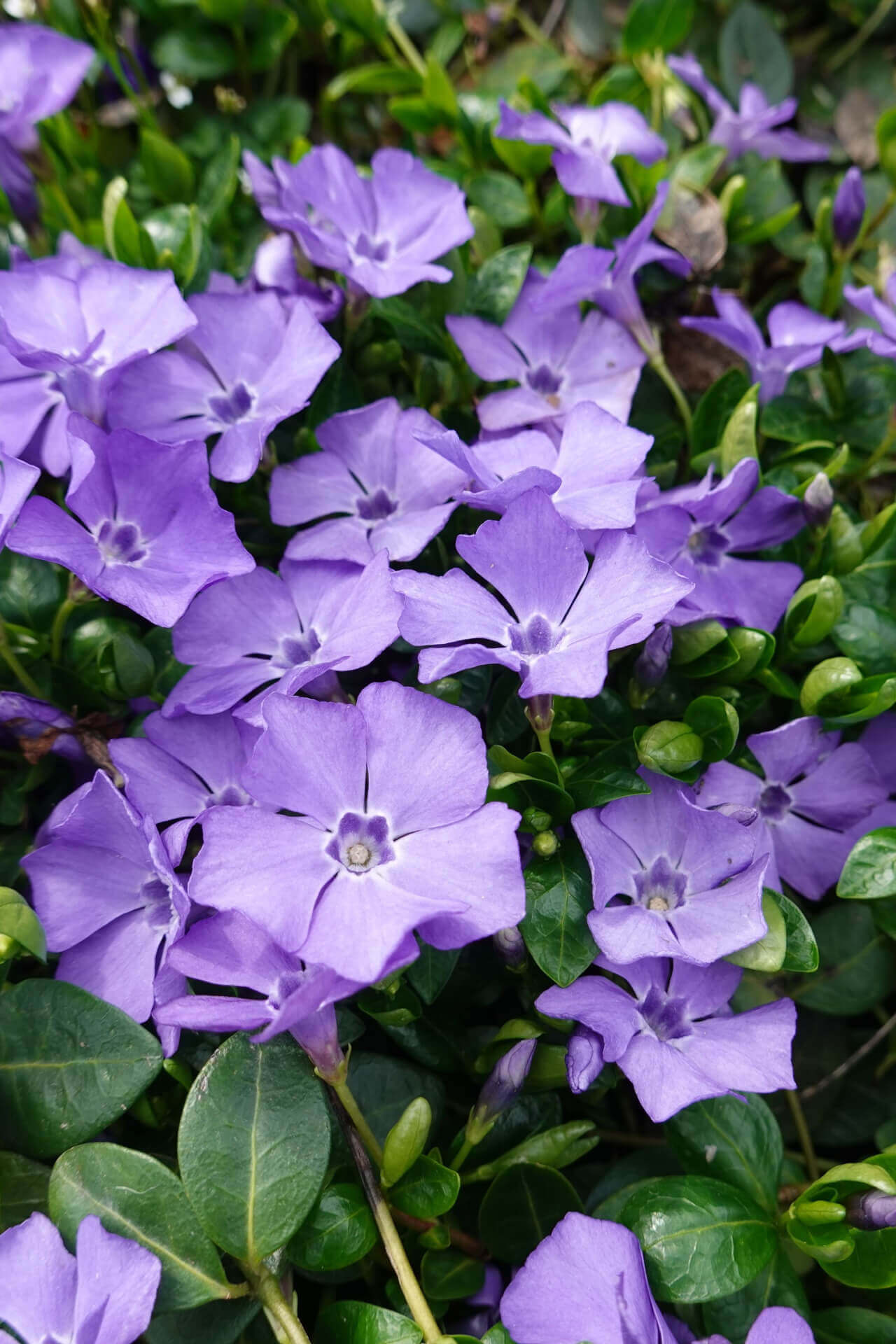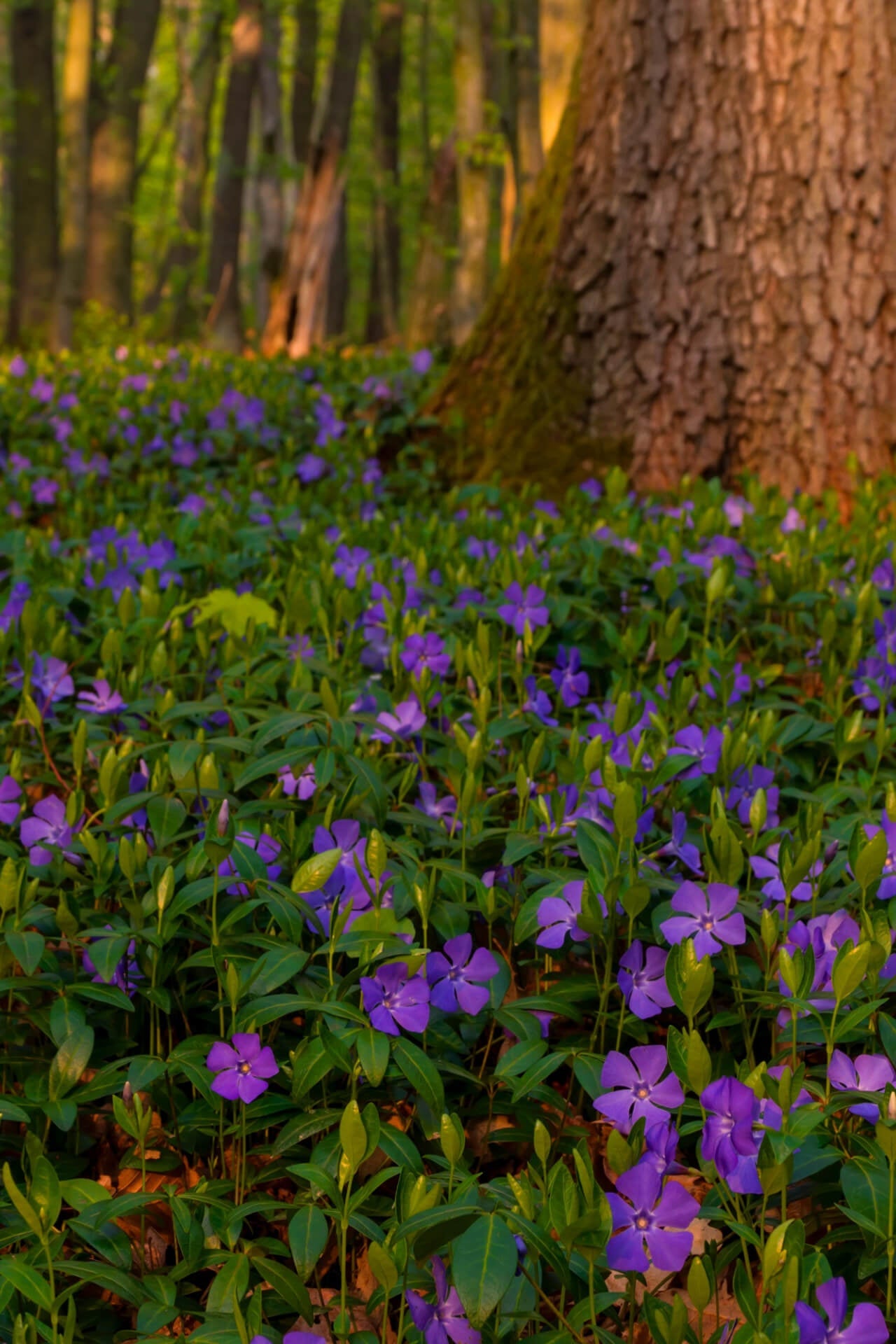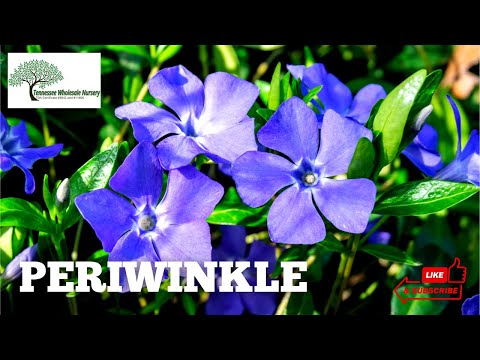Periwinkle Plants For Sale
You will usually find the Periwinkle Plant spread out under a grove of trees or crawling across the ground in a garden. It is a flowering, evergreen, ornamental vine plant widely used as a ground cover in parks, lawns, or even cemeteries–anywhere there is bare soil to be covered. Its small purple flowers are delicately beautiful, and covering a hillside, they can take your breath away.
Periwinkle Plant Details – Ideal for Weed Suppression & Erosion Control
Family: Apocynaceae
Light Requirement: Prefers partial shade, tolerates full sun
Water Needs: Moderate, though it can be drought resistant once established
Height: 6-24 in
Spread: Over 2 feet
Growth Rate: Rapid
Bloom Time: Spring, sometimes also autumn
Flower Color: Purple, blue-violet, white
Wildlife Value: Prevents erosion, weed suppression
Key Features of Periwinkle Plant
The Periwinkle Plant is a ground cover that grows out rather than up. It only reaches 6-24 inches in height, but forms dense mats of vegetation that can spread rapidly across large areas. Its delicate, star-shaped blossoms are most commonly found in a purple or violet hue that gives off a glow in the evening twilight. Its oblong leaves are a deep green with a glossy finish, strikingly complementing the luminous flowers.
Periwinkle Plant Details
The Periwinkle Plant is native to Europe, Northwest Africa, and Southwest Asia, but was introduced in North America as an ornamental plant in the 18th century. The species was admired for its rapid growth rate and stunning color, and remains a beautiful addition to any lawn or garden looking to cover a sparse area in a floral carpet.
In North America, it is an invasive plant that, due to its rapid growth rate, commonly outcompetes native vegetation. As a ground cover, this perennial helps with weed suppression, a crucial fact for gardeners. It can also help prevent soil erosion, a severe environmental phenomenon that can cause water pollution and impact crop yields.
This violet plant is a whirlwind of growth and beauty, giving our soil much-needed protection so long as it doesn’t smother its native neighbors!

Exposure
Periwinkle plants thrive in partial to full shade but can also tolerate some morning sun. They prefer dappled light and are ideal for shaded garden areas, making them perfect ground cover under trees or in shaded borders.
Height at Maturity
Under 12"
Usage
Groundcover
Shipped As
Bare-root
Ships
USPS
Planting Zones
4-9




